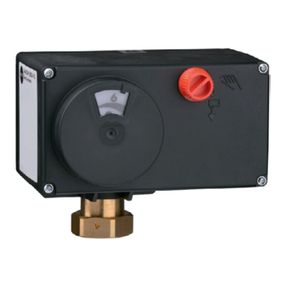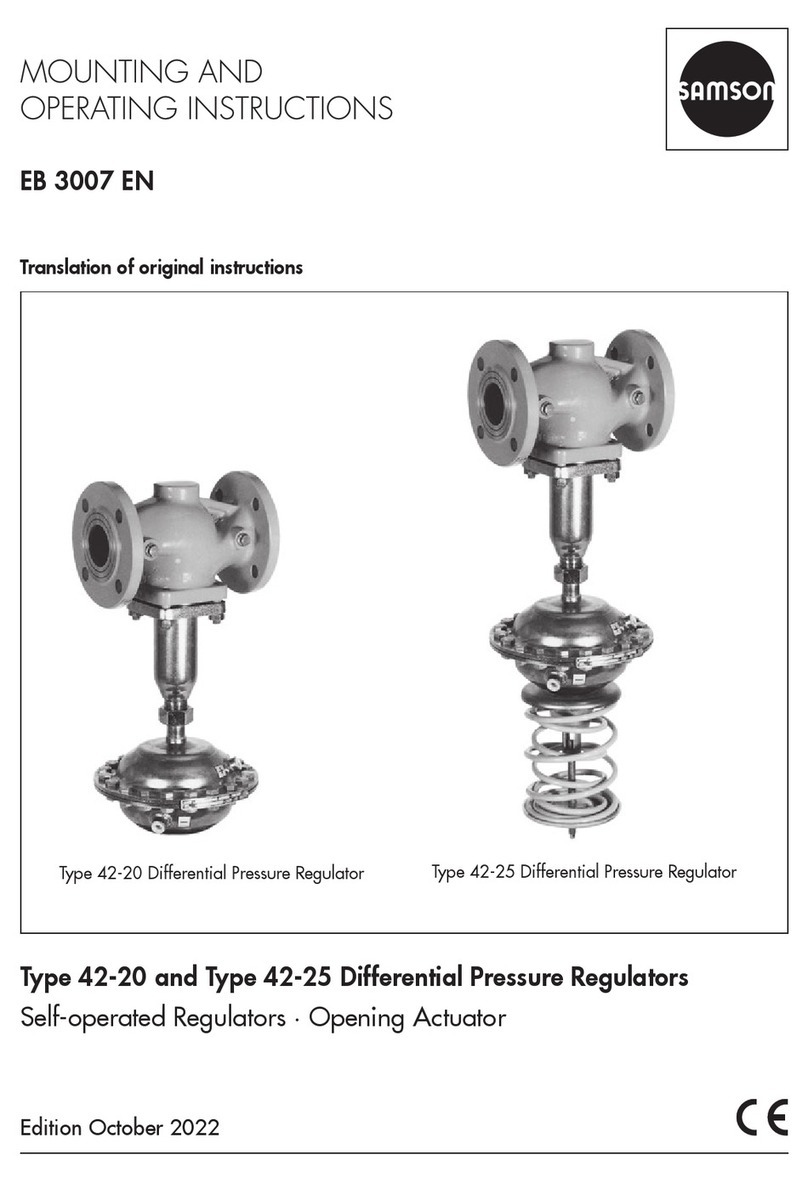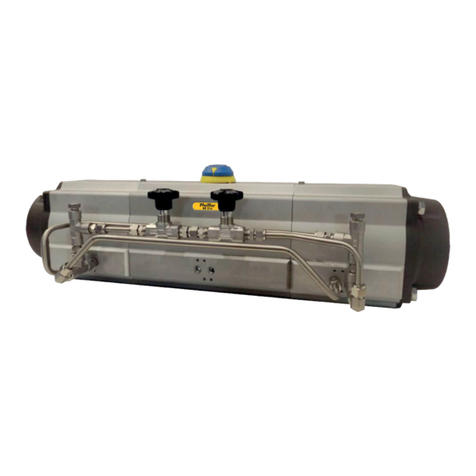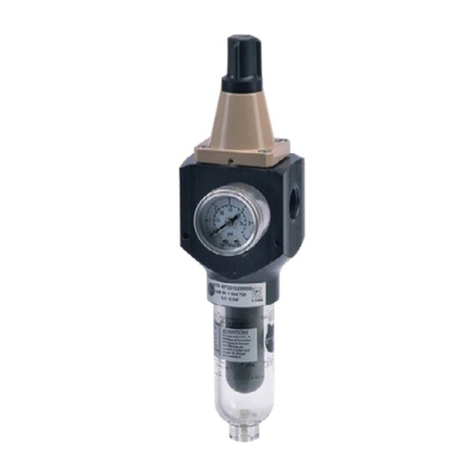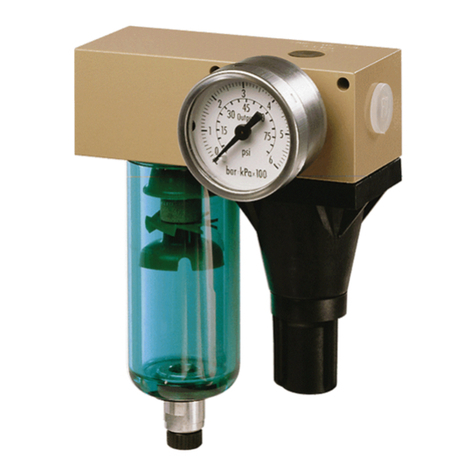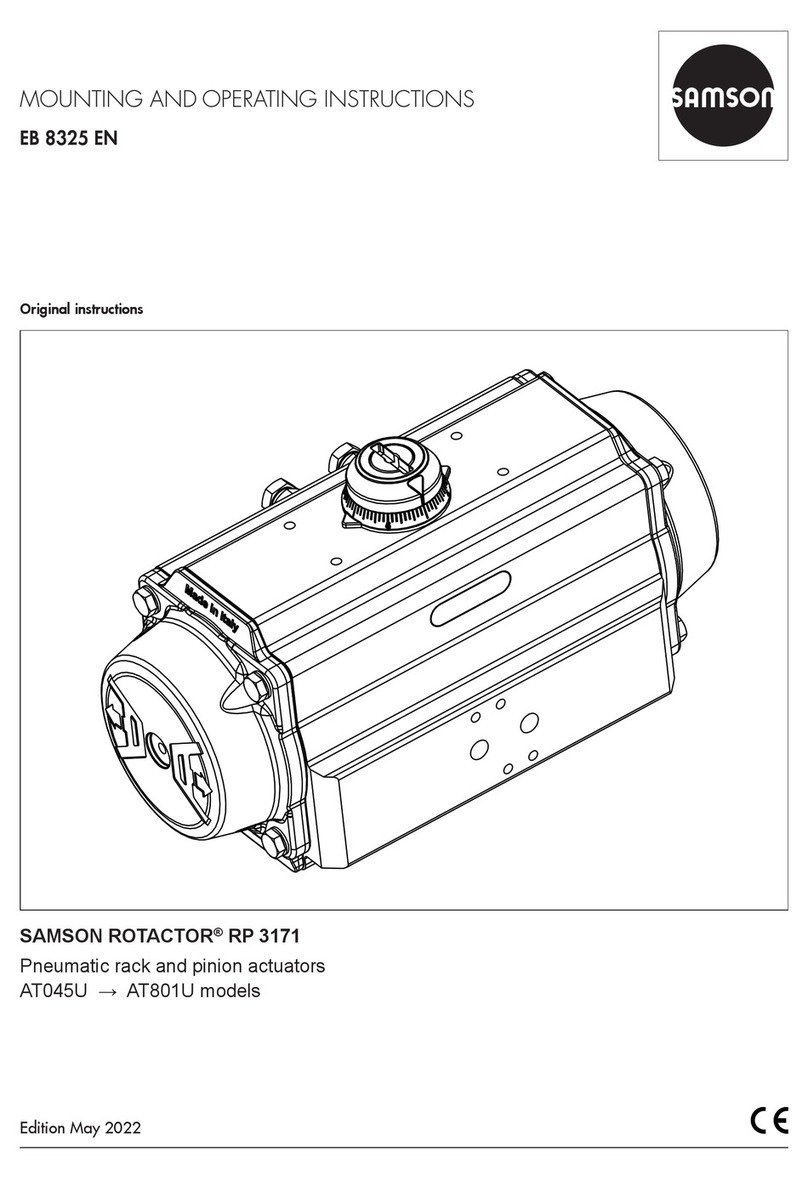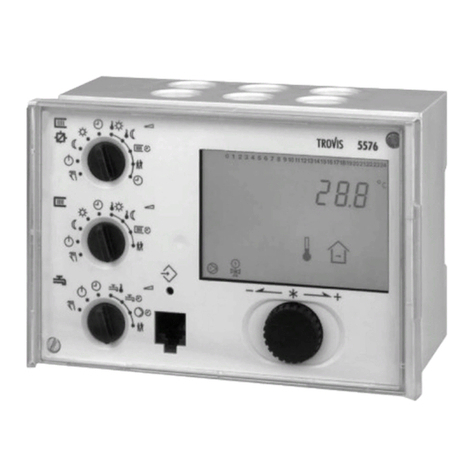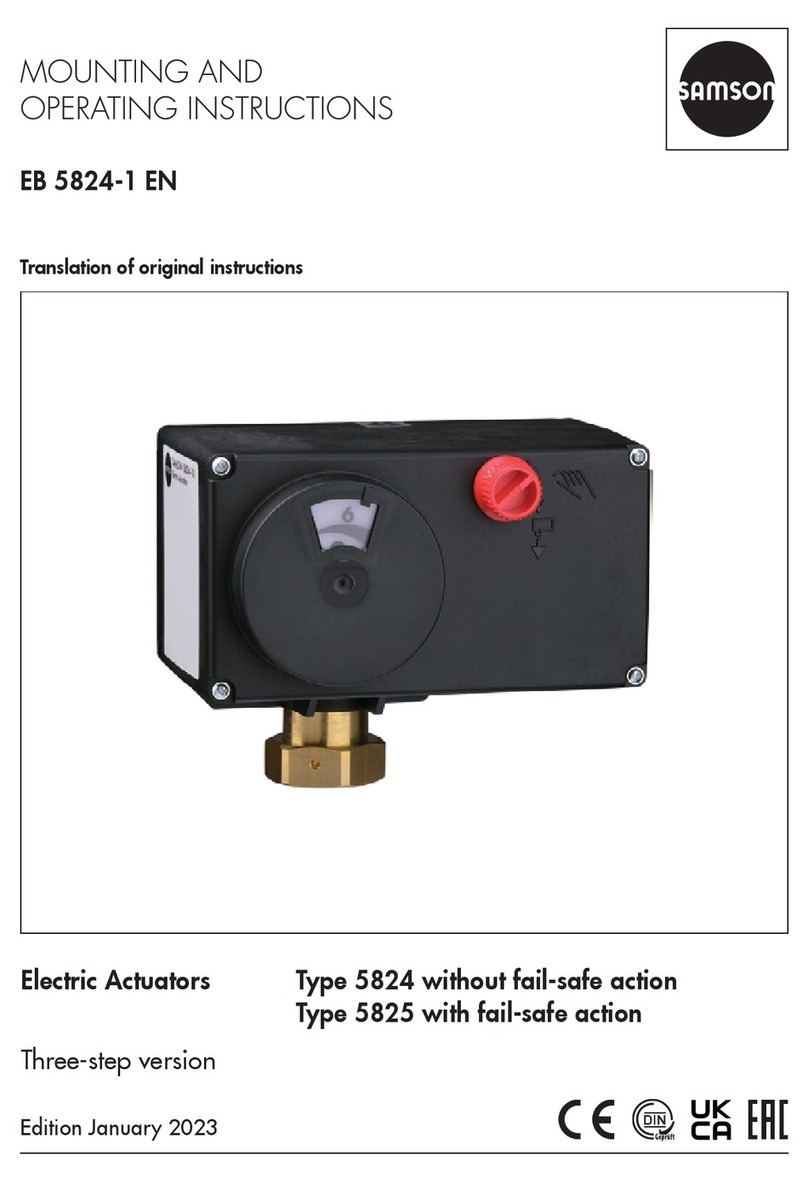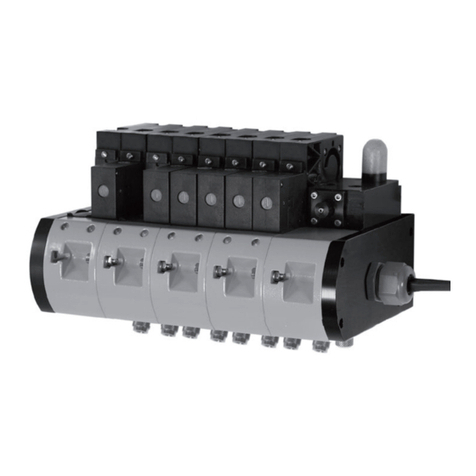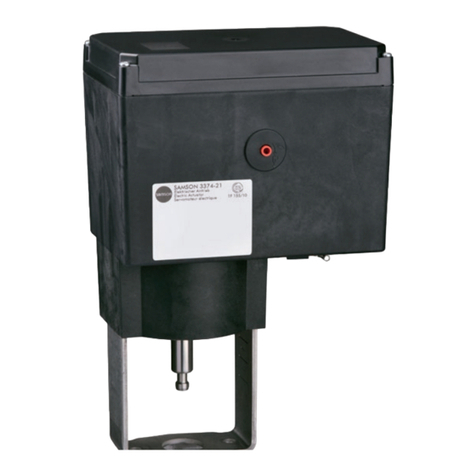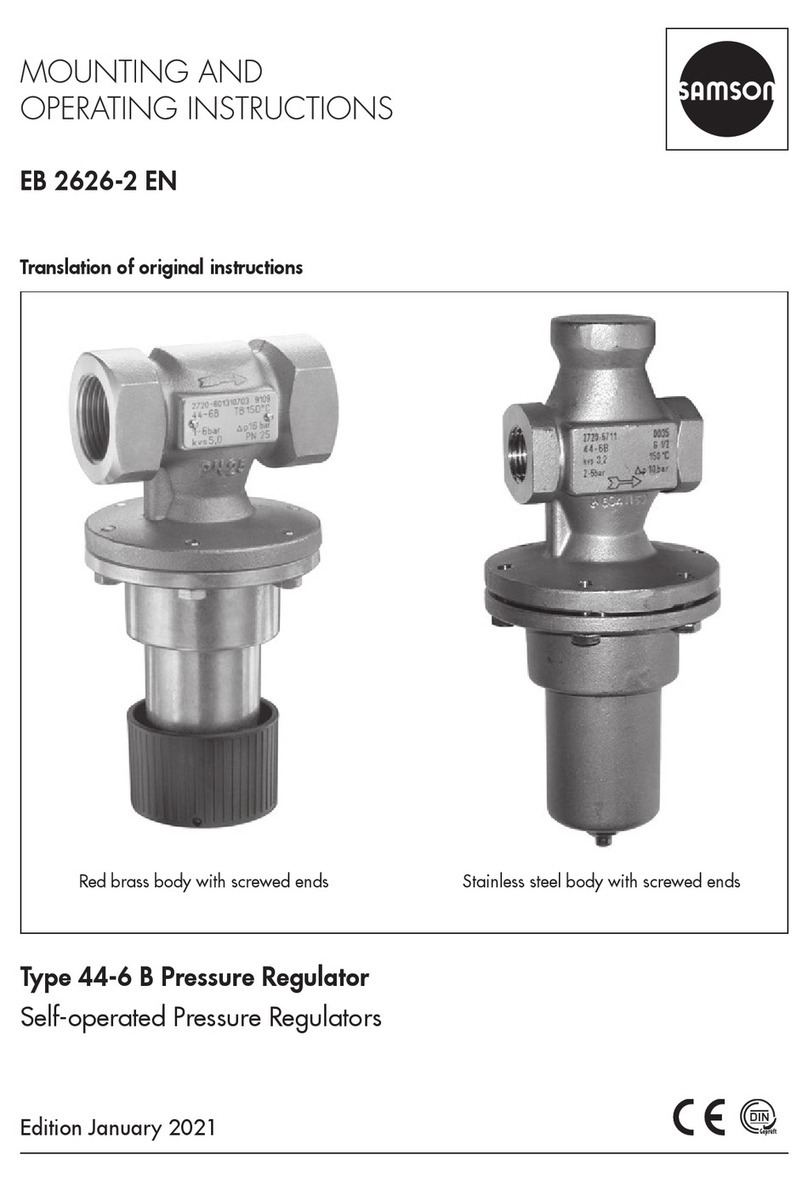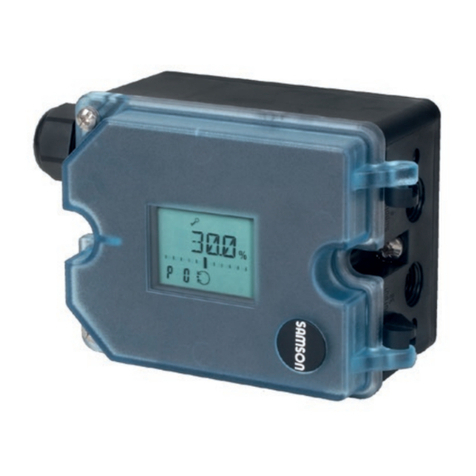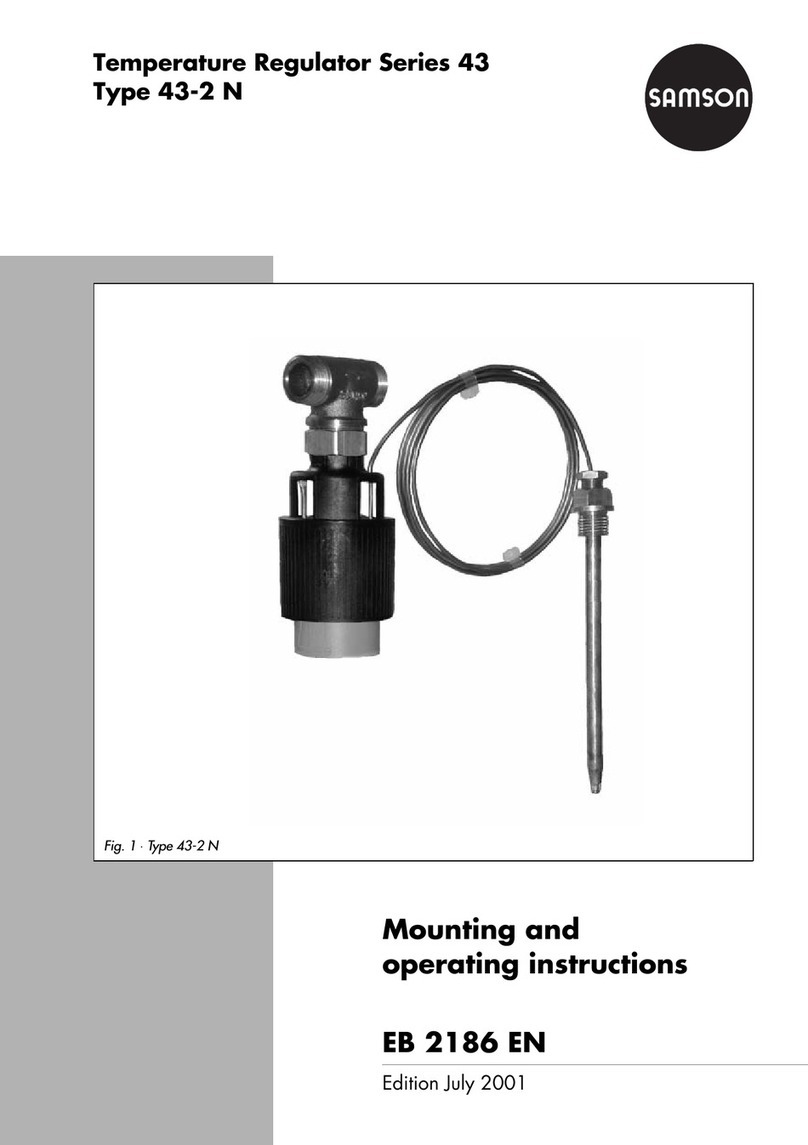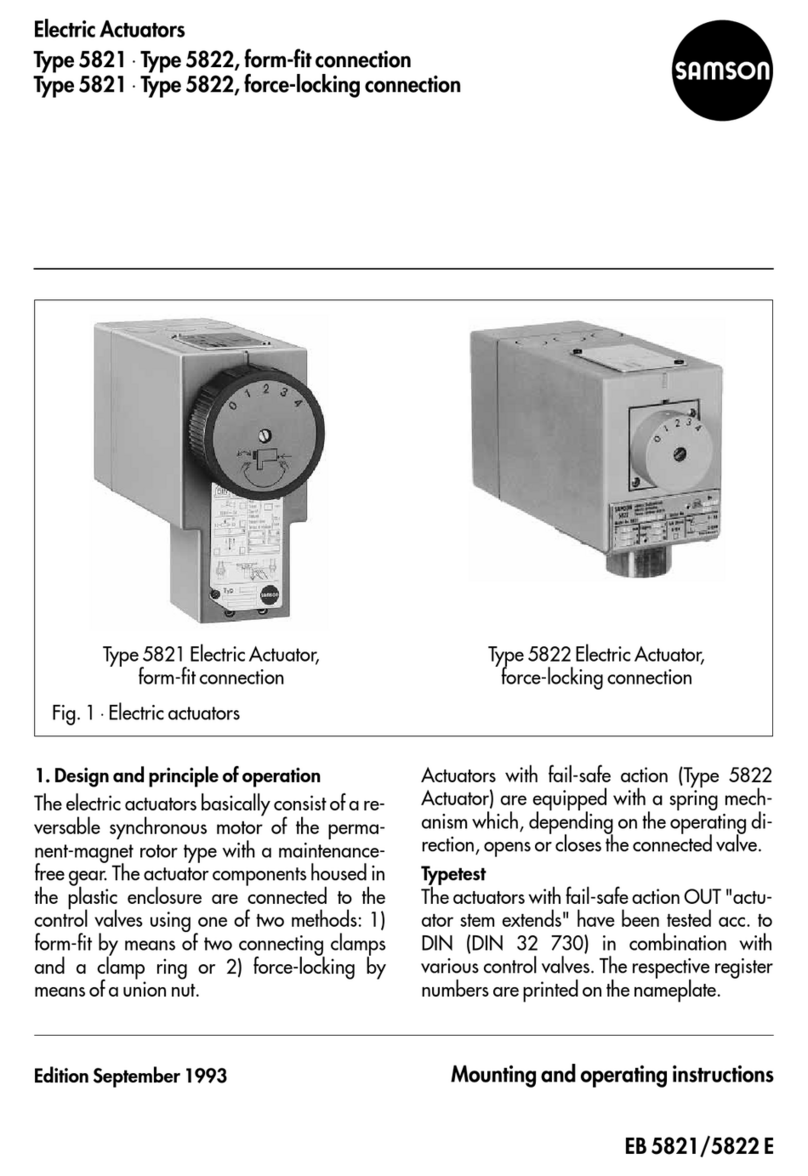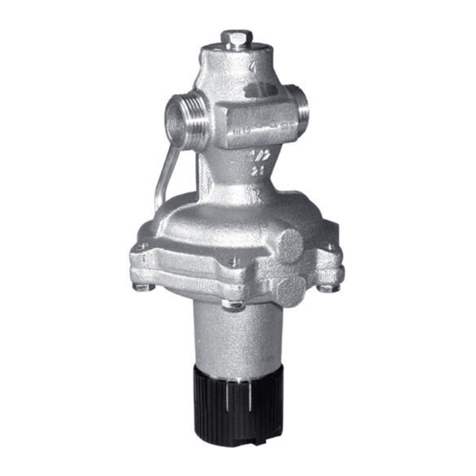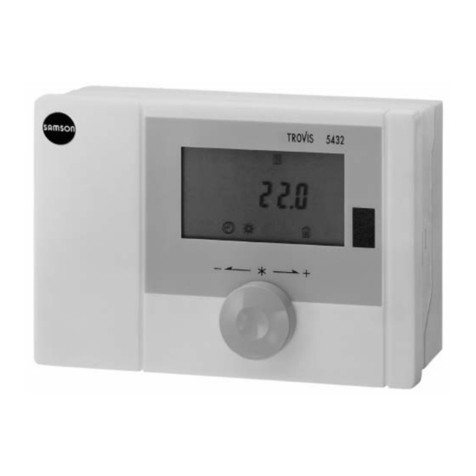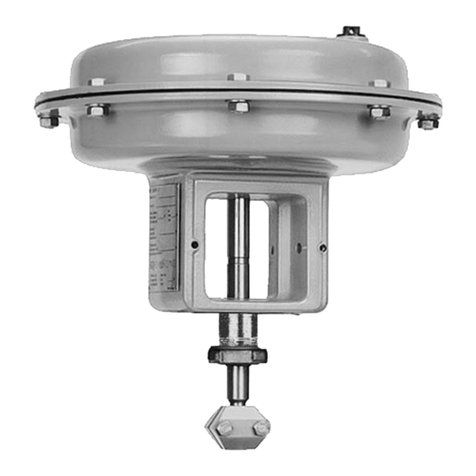
the bore (11) in the valve body, acts on the
upper diaphragm chamber of the actuator.
The differential pressure creates a position-
ing force at the operating diaphragm which
is used to position the plug depending on
the force of the positioning springs (8). The
force of the spring assembly, i.e. the set
point, is modified by turning the set point
adjuster (9).
2Installation
2.1 Installation position
The differential pressure regulators must be
installed in horizontal bypass or short-cir-
cuit pipes with the actuator suspended
downward (see Fig. 3).
Regulators in sizes DN 15 to DN 25 can be
installed in vertical pipelines, too. For me-
dium temperatures above 80 ° , the regulator
must not be installed with the diaphragm actu-
ator pointing vertically upward. The medium
must flow through the valve in the direction in-
dicated by the arrow on the valve body.
2.2 Strainer
Since sealing parts, globules, and other im-
purities carried along by the medium may
impair the proper functioning of the valve
and especially the tight shut-off, a strainer
(SAMSON Type 1NI) must be installed up-
stream of the differential pressure regulator.
The strainer must be installed so that the me-
dium flows through it in the direction indi-
cated by the arrow on the strainer body.
The filter element must be suspended down-
ward. Ensure that there is sufficient space
available to remove the filter.
2.3 S ut-off valves, pressure
gauges
We recommend the installation of hand-
operated shut-off valves both upstream of
the strainer and downstream of the regula-
tor. This allows the plant to be shut down
for cleaning and maintenance routines or
when it is not operated for extended
periods.
Install pressure gauges upstream and down-
stream of the valve to monitor the pressures
prevailing in the plant.
Fig. 3 ⋅Installation examples
1Shut-off valve
2Strainer
3Regulator
4 Pressure gauge
1
32
4
+
–
+
–
1
23
4
1
+–
Installation in a short-circuit pipe
Installation in a bypass pipe
EB 3126 EN 5
Installation
